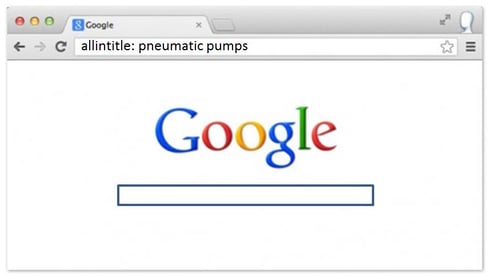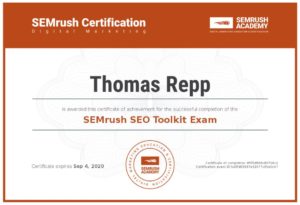 Just imagine owning your online industrial niche.
Just imagine owning your online industrial niche.
I wrote a blog post this past July, briefly, expounding on content saturation and what a bonanza it is for industrial marketers. The blog post was well received, particularly by other industrial marketers.
I still believe it is an unbelievable opportunity for most industrial marketers. Allow me to expound a little more about content saturation. Maybe…I will convince a few more, perceptive, B2B industrial marketers.
First, let me define content saturation for all the late comers. Go to the first couple of paragraphs of July’s blog post to understand content saturation.
As an example of low saturation, allow me to give you a little “inside baseball” stuff. (Sorry…one of my favorite metaphors… since the Royals just beat up my Tigers this year and won the World Series this past Sunday)
We are doing a content/inbound marketing program for a successful industrial supplier in the Midwest. Based on the products they sell and the services they provide I have identified 90 critical keywords. As we move forward with content deployment, we will track all 90 keywords in our marketing automation software. If our customer adds another product or service and we can easily add more. More importantly, we will add “long-tail” versions for these critical keywords as we get more data on the most effective. I will go into a bit more detail about long-tail keywords at the end of this post.
Out of those 90 keywords, I have identified 25 of these keywords as “tags” or “topic tags” that we will use to archive our customer’s topics. This type of strategy helps the search engines “tag” webpages properly according to the top-level topic.
Think of these “tags” as file cabinets that are alphabetized. Within the file cabinet titled “A” are many topics that start with “A”. This “tag” strategy prevents individual webpages from competing and penalized by the search engines for duplicate content. You may have read from SEO experts that you should never have duplicate content on your web site. True. This strategy helps visitors find the right information and avoid penalties from good ‘ol Google for inserting, sometime needed, duplicate content for web visitors.
OK…now you know how I selected 25 topic tags for our customer. Now, I need to know just how much content is out there that competes with my customer’s topics.
In other words, how much sweat equity is this marketing effort going to take?
So I go to Google and use the “allintitle:” command. By using the allintitle: command, Google returns a number that tells how many webpages use the exact keyword phrase in the HTML title tag of the web page. Go ahead and try it for “pneumatic pumps”. In the top left corner of the search engine return page you will see a number. Your search should tell you that 10,100 web pages use “pneumatic pumps” in their title tag. It is good a bet, if “pneumatic pumps” is in the title tag of the webpage, the content on that web page is, specifically, about pneumatic pumps.
Try using the same research tactic for some of your industrial products. How competitive are your product & service topics?

Here are my rules of thumb for title counts and content saturation in the industrial market. I have adjusted these perimeters for the lower saturation and lack of quality content for the B2B industrial market.
Under 1000 titles: Non-competitive: This category allows you to get on the first page of Google almost as soon as you post a webpage or blog post. You are blogging aren’t you?
1000-5000 titles: Mildly competitive: With a relatively small amount of content, your webpage quickly rises to the top of Google. At this point, your content can be relatively weak and you can still rank well. That is, you can still be on a learning curve and benefit from good SEO and content.
5000-10,000 titles: Competitive: This will take a little more sweet equity to get on the first page of Google, but in my experience it is not difficult because most industrial marketers are not experienced in good SEO tactics or developing quality content. Keep in mind that Google rewards content that gets clicks, downloads and social signals from Linkedin, twitter & Facebook, etc. Given the same amount of content an industrial marketer that delivers the best content wins in Google’s eyes.
10,000-50,000 titles: Somewhat competitive: Again, for the same reasons I cite above, it is not difficult to gain top position for most industrial marketers.
Over 50,000 titles: Highly competitive: This takes some real work, but with a strong content marketing strategy, some creative folks on your team, not that difficult to achieve top placement.
Let’s circle back to my industrial customer. For obvious reasons, I do not want to blow their cover and tell you their keywords and topic tags.
I used the allintitle: command and checked all 25 topic tags and there were only two of the topic tags in the highly competitive category. None were over 100,000, still a relatively small number considering the number pages on the web.
A low content saturation scenario such as this gives our customer the maximum amount of market maneuverability. If we do our job well, in one year our customer will practically own his industrial niche.
Web visits will follow. Landing pages will lead to contacts. Contacts will lead to B2B lead generation and sales.
Most importantly, for the long-term, they have created the most authority in Google’s eyes. As you can easily see, competitors will have a difficult time catching up. Google loves first-to-market.
I have performed similar exercises for other industrial customers in completely different niches. In almost every case, there is similarly low content saturation. And, similarly, amazing opportunities to own that industrial niche.
Let me take this content saturation concept to one more exciting level using the long tail version of a topic tag for your own industrial marketing strategy. This concept works especially for industrial marketing because of long, technical terms where there is almost no content. Yet, keep in mind, your technical and engineering crowd is searching for solutions using these longer keywords.
Since we are talking about “content saturation”, go ahead and use the allintitle: command in Google. Type into Google’s search field, “allintitle: content saturation” If you do, you will see there are only 638 web pages talking, specially, about content saturation. Now, let’s try a long-tail version of “content saturation”. Type in “allintitle: content saturation for industrial”. There are only four pages listed in the results and I own them all.
Just imagine!
Want to know more about B2B industrial branding, give me a call or contact me via email.
Author:Tom Repp
A passionate marketer attempting to change the way industrial marketers leverage the web as a growth-oriented, lead generation machine. View all posts by Tom Repp






